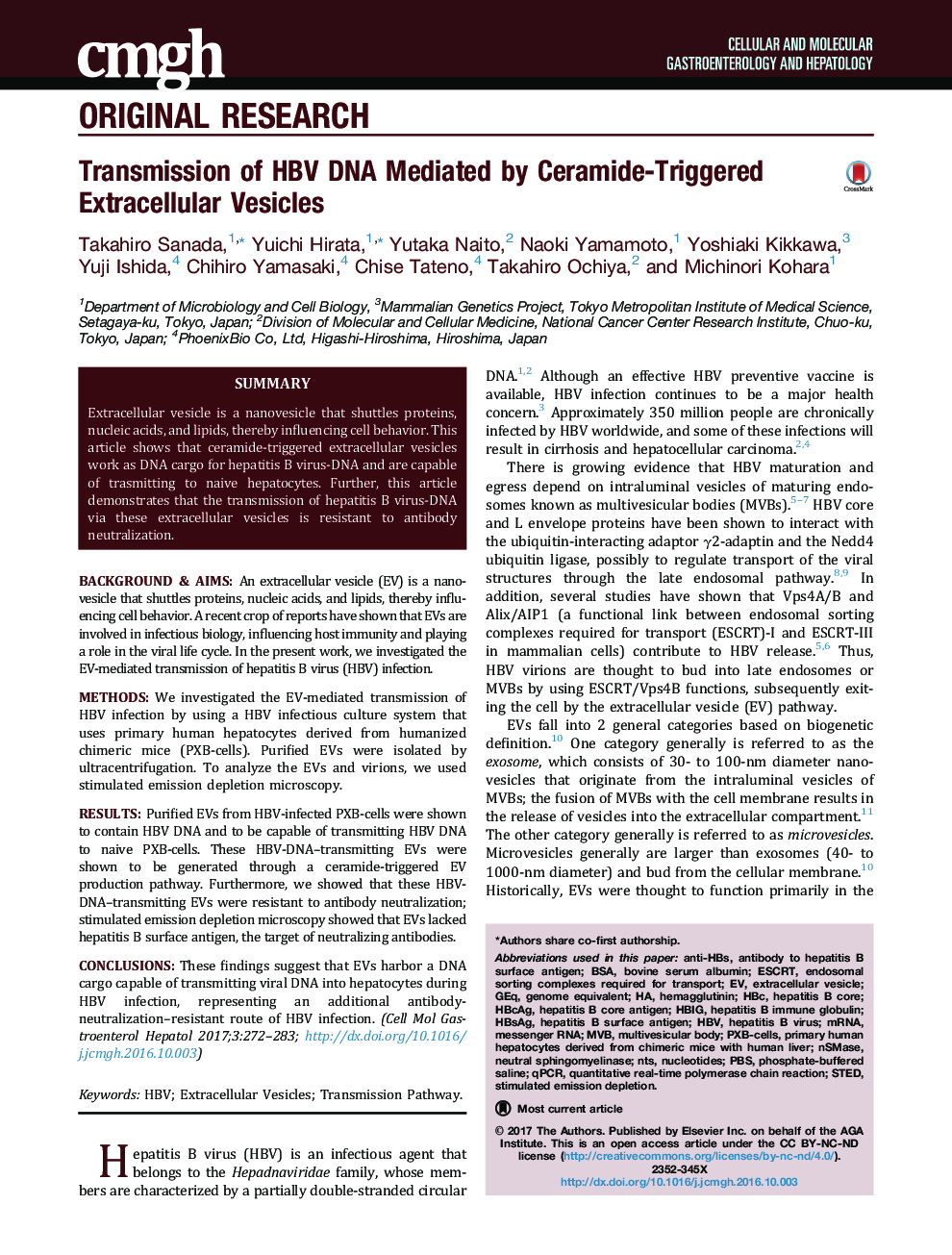| Article ID | Journal | Published Year | Pages | File Type |
|---|---|---|---|---|
| 5517296 | CMGH Cellular and Molecular Gastroenterology and Hepatology | 2017 | 12 Pages |
Background & AimsAn extracellular vesicle (EV) is a nanovesicle that shuttles proteins, nucleic acids, and lipids, thereby influencing cell behavior. A recent crop of reports have shown that EVs are involved in infectious biology, influencing host immunity and playing a role in the viral life cycle. In the present work, we investigated the EV-mediated transmission of hepatitis B virus (HBV) infection.MethodsWe investigated the EV-mediated transmission of HBV infection by using a HBV infectious culture system that uses primary human hepatocytes derived from humanized chimeric mice (PXB-cells). Purified EVs were isolated by ultracentrifugation. To analyze the EVs and virions, we used stimulated emission depletion microscopy.ResultsPurified EVs from HBV-infected PXB-cells were shown to contain HBV DNA and to be capable of transmitting HBV DNA to naive PXB-cells. These HBV-DNA-transmitting EVs were shown to be generated through a ceramide-triggered EV production pathway. Furthermore, we showed that these HBV-DNA-transmitting EVs were resistant to antibody neutralization; stimulated emission depletion microscopy showed that EVs lacked hepatitis B surface antigen, the target of neutralizing antibodies.ConclusionsThese findings suggest that EVs harbor a DNA cargo capable of transmitting viral DNA into hepatocytes during HBV infection, representing an additional antibody-neutralization-resistant route of HBV infection.
